While there are great inflatable (aka iSUPs) boards, as well as great non-inflatable boards (or rigid paddle boards), we get asked very often which ones are better.
Our preference (and feedback from customers) is that they prefer to paddle and own a rigid paddle board. Our rigid paddle boards outsell our inflatable paddle boards by a 9 to 1 ratio. Keep reading to find out why!
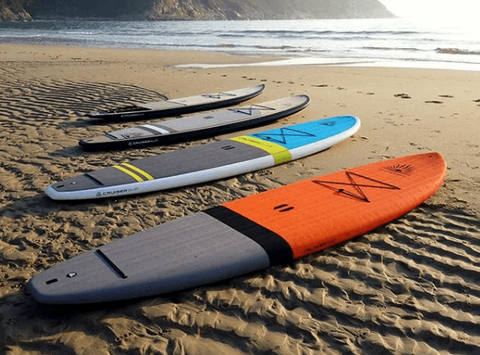
Why are Non-Inflatable Stand Up Paddle Boards Better than iSUPs?
For some paddlers, inflatables are the way to go. If you take on airplane, don’t have the space to store a non-inflatable board, or a way to transport a rigid SUP board, inflatables are great. They store easily in provided back packs, and can fit in the trunk of your car and apartment. If space or storage constraints dictate an inflatable, or not have a board at all, for sure getting an inflatable is the choice to go with. For those who travel by airplane with their boards, inflatables are also a great option as it can be costly, if not impossible, to travel by airline with a rigid paddle board.
However, when we do demos and testing, people prefer paddling rigid boards to iSUP by an overwhelming margin. They are just that much bettter to paddle - especially in choppy conditions. If you have the space at home to store a rigid board, and a vehicle that can carry it either inside or on roof racks, then we think a rigid board is your best choice. Let us explain why!
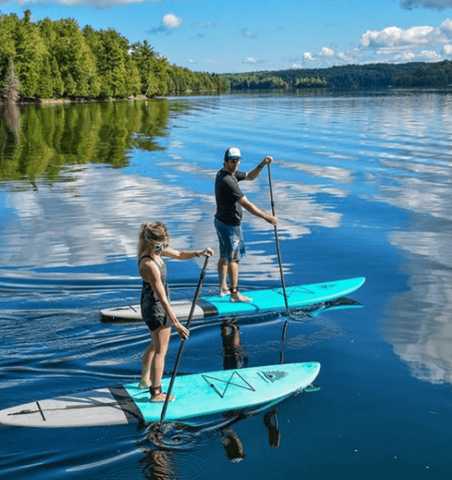
Rigid Boards are Ready to Paddle
With a rigid board, you just grab your board and paddle and hit the water. There is no pumping up (which takes a up to 15 minutes, and is difficult, (especially for women - but more on that later), and at the end of your paddle, you just put it away ready for next time. No pumping, checking air pressure, and no deflating needed. Rigid boards are the fastest and most convenient way to get on the water and paddling! 
Inflatable Boards are Difficult to Inflate
If you are going to inflate your iSUP board with the hand pump that is included, be prepared to be pumping for a little while. Expect to put anywhere between 200 and 350 pumps of air into the board, and expect it to take anywhere between 10 to 15 minutes. As well, expect it to start to get harder and harder as the board gets to higher and higher air pressure. Also expect to be hot, sweaty, and tired before you have even started your paddling session.
With inflatables, if you don’t put the suggested air pressure into the board, it will be very soft and won’t perform properly. Will feel like a glorified air mattress. For those that need to paddle inflatables due to storage or transport issues, this is an unavoidable part of being able to enjoy paddle boarding. However, if you have storage and transport for a rigid board, pass on the extra hard work and time needed to inflate and get a rigid board!
Pro Tip: Electric pumps do make it easier, but if you have storage for a full sized board, invest that money you would spend on the electric pump on a set of Cruiser SUP Soft Roof Rack for your car! It is much easier to lift a board onto a roof rack than it is to pump up an inflatable!
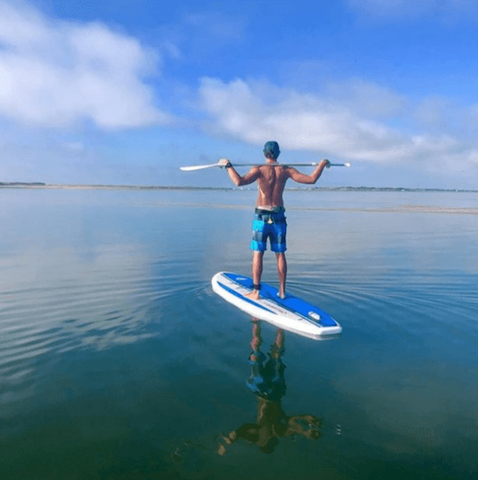
Rigid Paddle Boards are Stiffer
Good quality iSUP boards do get very stiff. Boards like the Crossover Air or V-Max Air will inflate to 18psi, and are super stiff. However, even the stiffest inflatable is soft compared to a rigid board like the Fusion, Bliss, or Escape. That cheap inflatable you saw on-line for $299 that only goes to 12psi? Forget about that being a cheap iSUP, that is more like an expensive pool toy or air mattress.
Stiffness matters. In chop, a soft board (anything under 15psi inflatable) will bounce and flex like crazy which makes for a very rough and awkward ride. As well, stiffer is faster and more responsive. The power you generate from your paddle stroke goes directly into forward speed and is not lost in the flex of the board.

Rigid Paddle Boards Perform Better
If you compare a rigid board and inflatable board of roughly the same design concept, such as an all around shape, in almost all cases, the rigid board will outperform the iSUP. The Cruiser SUP rigid board will have a much more defined shape (CNC shaping), be faster, have better tracking, be stiffer, and have better handling in nearly all water conditions. When it comes to spending your hard earned money buying a new paddle board, and getting the most out of each SUP session, performance matters! 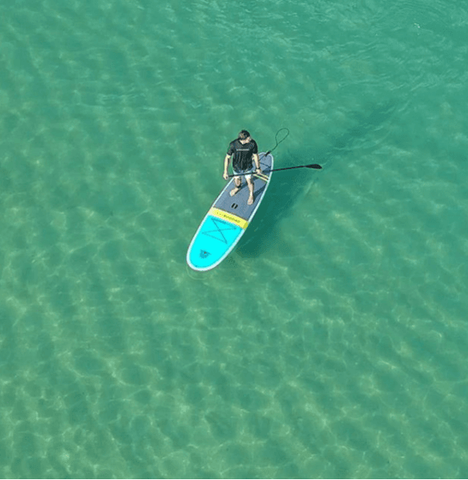
Safety
A rigid board is rigid, as in made of solid materials. An inflatable board is full of air and glued together. It is rare for an inflatable board to lose air while on the water, but it does happen. We have had cases where customers have hit something very sharp in the water causing a hole and a leak. If you are off shore and your board starts to leak quickly, you lose flotation and idea of getting back to shore safely starts to become a very real consideration, very quickly. You want to exercise care near hard or sharp objects with both style boards, however, a damaged rigid board will still get you back to shore in an emergency.
Pro Tip: Neither a rigid board or inflatable board will get you back to shore if you are not wearing a leash and get separated from your board. Wear a leash when paddle boarding!
Rigid vs Inflatable Paddle Boards – Long Term Durability? Here is the straight answer:
As stated above, inflatable boards are glued together, (at the side rail seam), due to split in the drop stitch material top and bottom. We have sold many brands of iSUPs for over 10 years and have seen them fail at the seams, where they are glued together, after 2-5 years of use. You don't want to be paddling off shore when an inflatable board fails.
iSUP can not compare to rigid boards construction, with many layers of fiberglass, carbon and wood laminated - and usually compression molded for strength.
There is a bewildering array of inflatable boards available now - and a glut of cheap inflatable boards. The price and storage may sound attractive, however, non-inflatable boards represent the best long term value, safety and enjoyment.
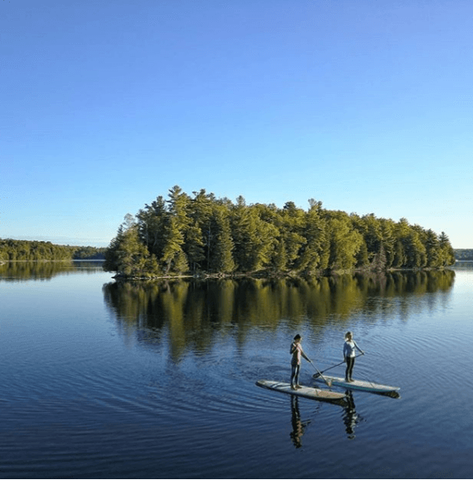
Rigid vs Inflatable Paddle Boards – We Prefer and Recommend Rigid!
Both are great styles of boards, and in some cases, inflatables make the better choice. However, if you are fortunate to have storage space for a rigid board and can transport it to the water, a rigid SUP is the stand up paddle board to buy, with 100% certainty!
Did we miss something? Or, do you want to talk about which option is best for you? Just click on the Live Chat button at the lower right of your screen!


Phil
If you paddle near sharks, one shark nibble on an inflatable and you’re in the water with it. A rigid board can keep you out of the water and thus avoid you becoming a tasty morsel.